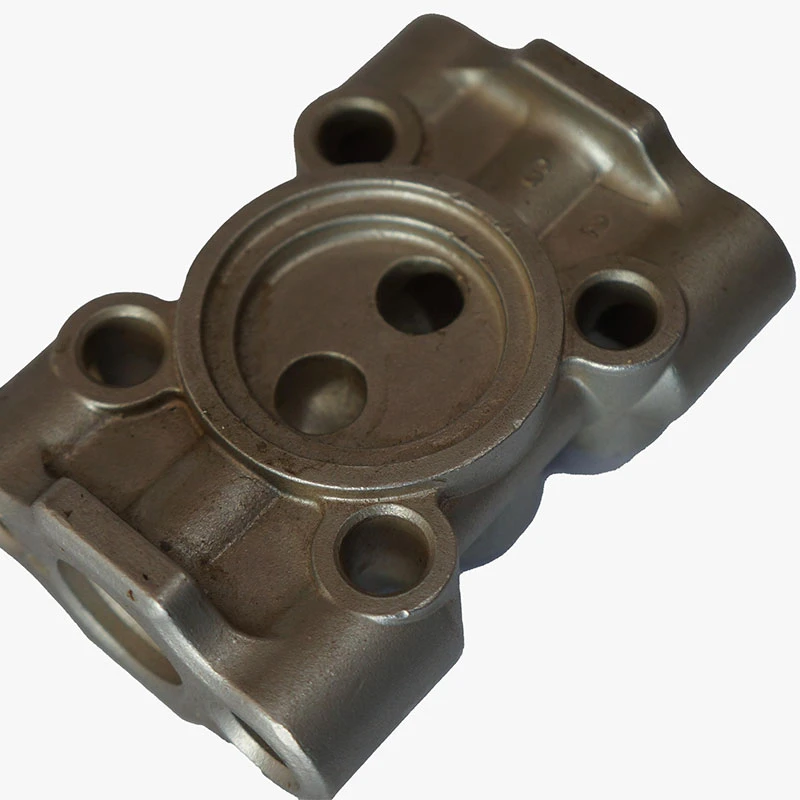sand casting and investment casting
Understanding Sand Casting and Investment Casting A Comparative Analysis
Casting is a manufacturing process that involves pouring liquid metal into a mold, where it solidifies to form a specific shape. Among various casting methods, sand casting and investment casting are two of the most widely used techniques, each with its own advantages, disadvantages, and applications. Understanding these methods can provide insights into their appropriate applications in modern manufacturing.
Sand Casting
Sand casting is one of the oldest and most versatile casting techniques, dating back thousands of years. As the name suggests, this method uses sand as a primary material for the mold. The process begins by creating a pattern, usually made from materials like wood, metal, or plastic, that resembles the final object. The pattern is placed in a sand mixture, typically composed of silica sand, clay, and water, forming a mold around it. After the pattern is removed, molten metal is poured into the cavity, and the sand mold is subsequently broken away to retrieve the finished part.
One of the main advantages of sand casting is its ability to produce large and complex shapes without the need for intricate mold designs. This method is also cost-effective, especially for low-volume production runs, as the materials used are relatively inexpensive and readily available. Furthermore, sand casting can accommodate a wide range of metals, including aluminum, iron, and bronze, making it highly versatile.
However, sand casting also has some drawbacks. The surface finish of sand-cast products tends to be rougher compared to those produced by other casting methods. Additionally, the dimensional accuracy may not be as high, requiring further machining for certain applications. Despite these limitations, sand casting remains a preferred choice for many industrial applications, particularly in larger parts such as engine blocks, frames, and large machinery components.
Investment Casting
sand casting and investment casting

Investment casting, also known as lost-wax casting, is a more refined technique that offers higher precision and better surface finishes compared to sand casting. The process begins with creating a wax pattern that is an exact replica of the desired final product. This wax pattern is coated with a ceramic shell made of fine sand and liquid ceramic, which is then heated to harden the shell. Subsequently, the wax is melted away, leaving a hollow ceramic mold for the metal pouring.
The melted metal is then poured into this mold, and after cooling, the ceramic shell is broken away to reveal the finished part. Investment casting excels in producing intricate and detailed shapes, making it popular in industries such as aerospace, automotive, and jewelry manufacturing.
The primary advantages of investment casting include excellent dimensional accuracy and a superior surface finish. This level of precision reduces the need for additional machining, saving time and costs in the production process. Furthermore, investment casting supports a wide range of metals, including high-temperature alloys and other specialty materials, which is essential for demanding applications.
Nevertheless, investment casting also has its challenges. The process is generally more expensive than sand casting, primarily due to the higher costs associated with materials and the intricate pattern-making process. Additionally, the production rate is typically slower, making it less suitable for high-volume manufacturing.
Conclusion
In summary, both sand casting and investment casting have unique strengths and weaknesses that make them suitable for different applications. Sand casting is ideal for larger, more straightforward components where cost-effectiveness is a priority, while investment casting is better suited for complex and precise parts requiring a high-quality finish. By understanding the characteristics of these two casting methods, manufacturers can make informed decisions about which process to use, ultimately optimizing their production efficiency and product quality. As industries continue to evolve, the adaptability of these casting techniques will remain crucial in meeting the ever-changing demands of modern manufacturing.
-
OEM Sand Cast Pump Valve Fittings - Baoding Hairun | Precision Engineering, CustomizableNewsJul.30,2025
-
OEM Sand Cast Pump Valve Fittings - Baoding Hairun Machinery And Equipment Trading Co., Ltd.NewsJul.30,2025
-
OEM Sand Cast Pump Valve Fittings - Baoding Hairun Machinery And Equipment Trading Co., Ltd.NewsJul.30,2025
-
OEM Sand Cast Pump Valve Fittings - Baoding Hairun Machinery|Precision Engineering&Fluid ControlNewsJul.30,2025
-
OEM Sand Cast Pump Valve Fittings - Baoding Hairun Machinery And Equipment Trading Co., Ltd.NewsJul.30,2025
-
OEM Sand Cast Pump Valve Fittings-Baoding Hairun Machinery And Equipment Trading Co., Ltd.NewsJul.30,2025















